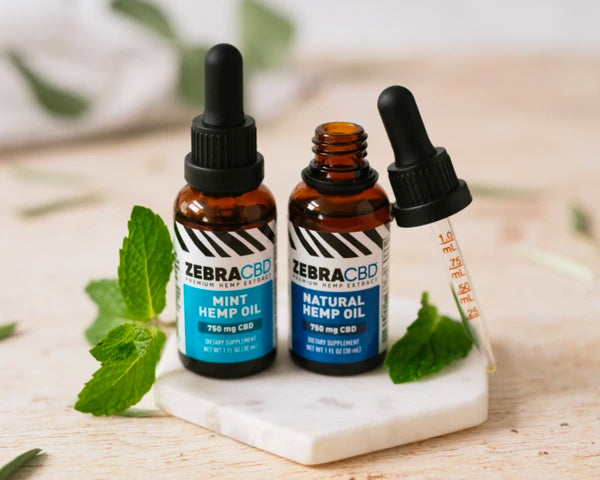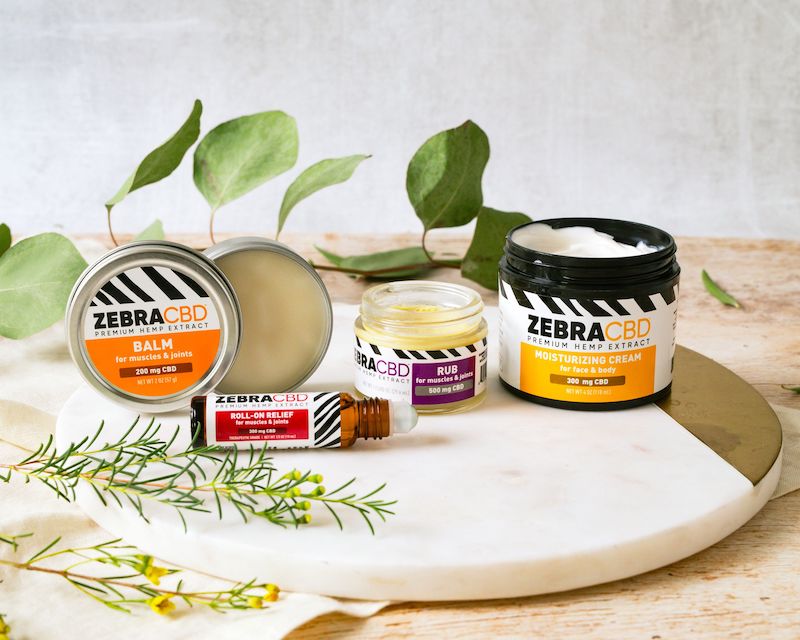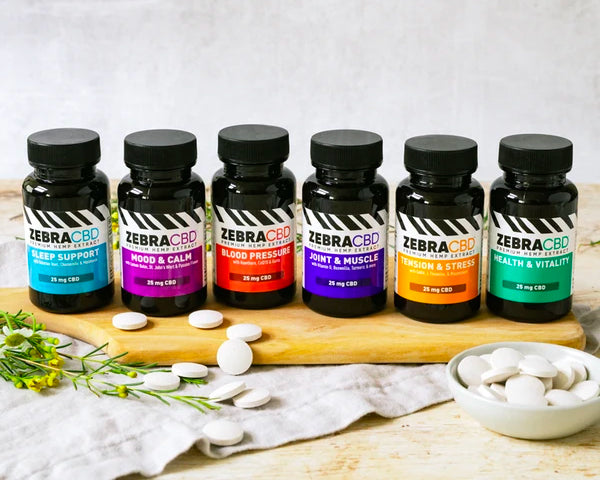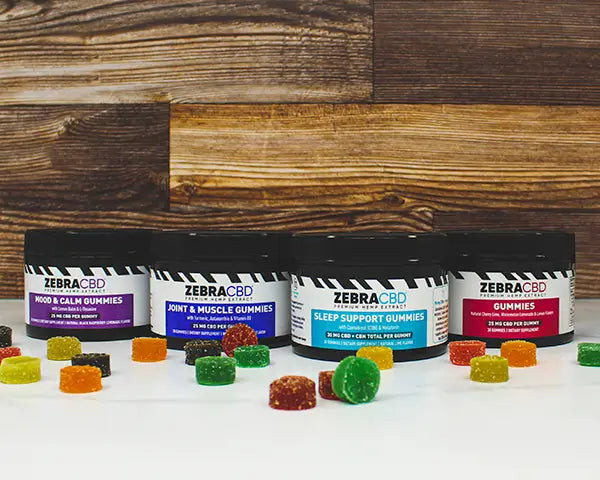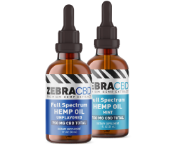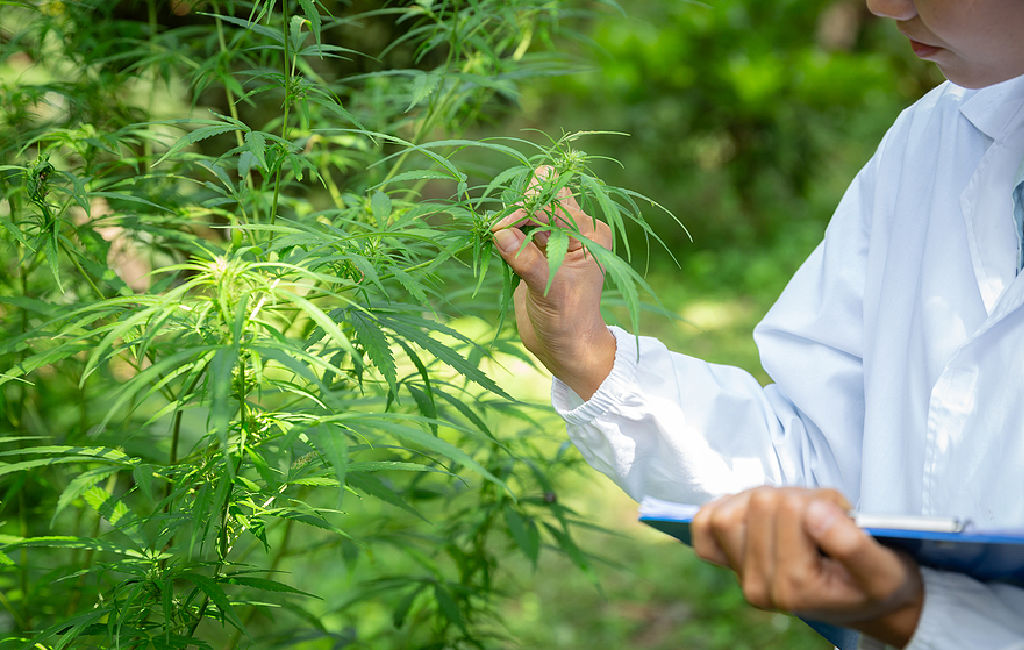
Like most Americans, you’ve started to see more and more hemp and CBD products everywhere, from grocery stores to cosmetic boutiques to gas stations. Depending on your location, you might spot anything from CBD gummies to balms to hemp flowers that look a lot like weed.
It’s normal to wonder: What is the difference between hemp and weed?
The short answer is simple: 2018 legislation defined cannabis plants with less than 0.3% THC as legal hemp. The long answer is a bit more complicated.
In this guide, we’ll break down the difference between hemp and weed in terms of legal definition, uses, properties and potential effects on the human body.
The History of Hemp and Weed
As we’ve already noted, the 2018 Farm Bill created a legal separation between hemp and weed.
If you grew up under the impression that cannabis and weed were interchangeable, you may be confused as to why the plant is suddenly legal and omnipresent...
Let’s take a closer look:
- Both hemp and weed (aka marijuana) come from the cannabis plant.
- There are two main varieties of cannabis, Cannabis sativa and Cannabis indica.
- Both hemp and weed can be derived from indica or sativa plants.
- The only true difference between hemp and weed plants is their THC content. To be classified as hemp, a cannabis plant must have less than 0.3% THC.
Selective Breeding For Hemp and Weed
As you can deduce, weed and hemp are essentially the same plant, but with different ratios of THC to CBD.
But how does that work?
There’s a long history of breeding one plant species to produce additional varieties, each with different properties. For example, kale, broccoli, cauliflower, kohlrabi and Brussels sprouts all come from a single plant species, Brassica oleracea.
The process of artificial selection (as opposed to natural selection) has allowed farmers to breed plants for the specific qualities.
Hemp was also one of the first plants to be spun into usable fiber 50,000 years ago, and over the course of that long history, it’s been manipulated for many different purposes.
- Before the rise of cotton and silk, hemp was a popular textile, used for everything from clothing to ship sails to rope and twine. Cannabis plants used for textiles were likely bred to favor fibrous stalks. They were harvested before they flowered (since flowering stunts growth).
- In contrast, other cannabis plants were bred to produce large flowers. Ever heard the term “bud,” used in reference to marijuana? THC is derived from the flower of the marijuana plant. These varieties were bred specifically for their psychoactive effects.
- Now, modern farming and plant cultivation make it possible to create hemp and weed strains with highly specific properties, including higher or lower amounts of THC, CBD and other less researched cannabinoids like CBG and CBN.
Hemp’s Many Benefits
If you grew up under the impression that cannabis and weed were interchangeable, you may be confused as to why the plant is suddenly legal and omnipresent when it contains some THC.
The 1970 Controlled Substances Act defined “marijuana” as a Schedule I substance — a controlled “drug” that was not approved for medical or recreational use. This law effectively made cannabis cultivation illegal within the U.S. However, over time, legislators began to see that the law may have gone overboard, preventing the cultivation of cannabis plants for their many historical uses, which go well beyond consuming weed.
Now that the 2018 Farm Bill has legalized hemp farming and the production of legal hemp, hemp plants can be used for all of the following purposes:
- Fibers and industrial products – Hemp fiber can be used for everything from clothing to sheets to paper, and hemp plants require less water and acreage than cotton or silk to produce the same volume. Hemp is becoming a central part of the sustainability movement, since it can also be turned into compostable bioplastic or fuel.
- Food – Hemp milk, hemp hearts and hemp seed oil are all nutritious products packed with heart-healthy fats and vital minerals. Beyond that, hemp milk can be used as a vegan substitute for dairy.
- CBD products – Many products like CBD oil or CBD tinctures can be made from hemp-derived CBD. We’ll talk more about the specific benefits of CBD in the next section. For now, suffice it to say that CBD can have a host of potential benefits for wellness and vitality, the likes of which have driven a booming CBD industry.
Hemp vs. Weed and the Endocannabinoid System
You now know that past legal efforts to end cannabis production sought to prevent access to psychoactive weed. However, hemp-derived CBD does not have psychoactive properties. So what accounts for the difference?

It all comes down to the different ways that THC and CBD interact with the endocannabinoid system (ECS). The ECS is a network of nerve receptors found throughout the human body. But humans aren’t the only organisms with an ECS; in fact, studies indicate that all animals may have similar receptors.
The ECS sends out neurotransmitter scouts to make sure everything is running smoothly. If issues arise, the body begins to mount an appropriate response. Together, these receptors are thought to help regulate homeostasis, including the following functions:
- mood
- memory
- stress response
- experience of discomfort
- sleep cycles
- focus and energy
- appetite
THC vs.CBD in the ECS
Both THC and CBD interact with the ECS. In fact, there are more than 100 cannabinoids in the hemp plant, thus named because they all interact with these nerve receptors.
Hemp-derived CBD can work its magic without the potentially irritating or unsettling side effects that accompany weed.
Because THC and CBD are the most prevalent and most-studied compounds in cannabis plants, we have a better understanding of how they affect the ECS:
- THC directly binds with nerve receptors. In doing so, it may have beneficial effects, including improved mood, relaxation and reduced soreness. However, it can also overwhelm the ECS and create an unwanted response, from increased appetite to intense stress to temporary memory lapses.
- In contrast, CBD has a more palliative effect. Rather than binding with receptors, it seems to help neurotransmitters better perform their job and return the body to a state of homeostasis.
Potential CBD Benefits
Thanks to its indirect interaction with the ECS, CBD is thought to have benefits that include the following:
- Fighting stress – One of CBD’s most popular uses is getting relief from frazzled nerves. If you have a test or a difficult phone call on the horizon, try taking a CBD gummy right before to experience a little more zen.
- Reducing soreness – Whether your back always hurts or your feet just get tired at the end of a long day out and about, physical discomfort can be irritating. Applying CBD to the afflicted area could potentially improve sore muscles and stiff joints.
- Supporting glowing skin – Is your skin prone to red patches and blemishes? Our sensitive skin often overreacts to environmental triggers. CBD can potentially help reduce this response. This effect, along with CBD’s hydrating properties, can help improve skin appearance and texture.
- Boosting energy – Are you feeling blah? If your body is overtaxed by its efforts to achieve homeostasis, it can zap your energy and leave you fatigued. This is why adding daily CBD to your routine could potentially help.
- Improving sleep cycles – Do you have trouble falling asleep or staying asleep? That’s normal! Whether the main culprit is nervous thoughts or night sweats, CBD could help regulate your body at night, too.
CBD For Pets
As we noted, humans aren’t the only creatures with an ECS! Dogs may benefit from CBD before unpleasant trips or after everyday activity. For that, check out our guide on CBD for dogs.
Choosing a CBD Product
In states where weed is legal, it’s possible to find marijuana-derived CBD.
But what’s the difference between CBD from hemp vs. weed?
Hemp-derived CBD can work its magic without the potentially irritating or unsettling side effects that accompany weed — assuming you make your purchase from a reliable CBD brand.
Legally, hemp plants must contain less than 0.3% THC, which means CBD should have no psychoactive effects. However, not all manufacturers meet their label claims. Others don’t bother with labels at all, making it difficult to know how much you’re actually taking.
Besides excess THC, some CBD may include pesticides, herbicides or heavy metals.
Make sure to purchase CBD from a reliable company with clear labeling. In addition, take time to understand what kind of CBD you’re buying:
- Full-spectrum CBD contains the full spectrum of naturally occurring compounds in the hemp plant, including THC, CBD, minor cannabinoids, terpenes and flavonoids. These compounds are thought to work better together, producing what’s known as the “entourage effect.”
- Broad-spectrum CBD contains all of the above compounds, minus THC. You should still experience the entourage effect.
- CBD isolate uses industrial extraction processes to separate CBD from the other compounds found in hemp. Without flavonoids and terpenes, it has a less distinctive smell and flavor, which can make it an ideal ingredient for gummies, candies, and other products.
Weed Out Concerns With Zebra CBD
Zebra CBD uses cutting-edge extraction technology to produce highly effective CBD products that are guaranteed to meet their label claims. Whenever you purchase one of our products, you’ll know exactly how much CBD is in the bottle (and in each individual dose).
Our hemp-derived CBD products combine CBD’s best effects with the power of other herbs and adaptogens. Shop our oils, tablets and topicals to find the right product for your wellness needs, whether they include reduced stress, improved sleep or glowing skin.
With our Label Accuracy Guarantee™, we meet our label claims in stride. Our mission is twofold: to provide the highest quality products and the best educational resources in the CBD marketplace.
By now, we hope you understand the difference between hemp weed! They’re often confused and yet, in many ways, worlds apart.
Source:
USDA. 2018 Farm Bill. https://www.usda.gov/farmbill
Thistle. The People’s History. https://www.mit.edu/~thistle/v13/2/history.htm
Vox. Kale, Brussels sprouts, cauliflower, and cabbage are all varieties of a single magical plant species.https://www.vox.com/xpress/2014/8/6/5974989/kale-cauliflower-cabbage-broccoli-same-plant

